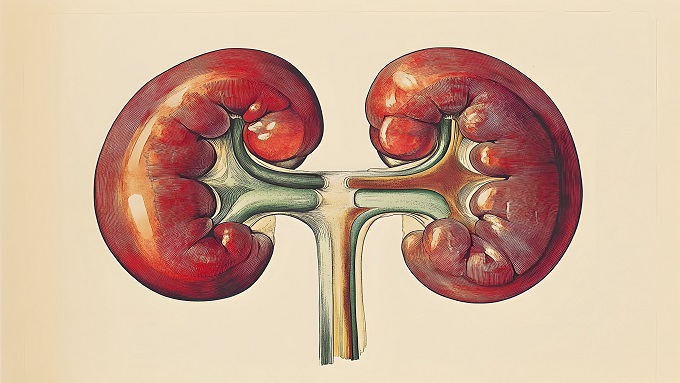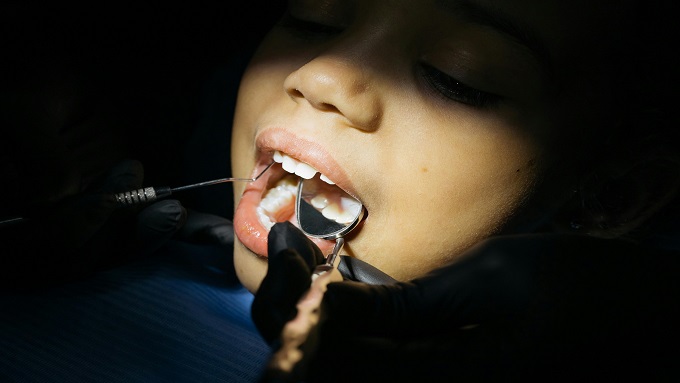DOES THE NIAS TRIBE'S HEAD CIRCUMFERENCE CORRELATE WITH BODY HEIGHT?

Downloads
Highlights
- A significant correlation was found between head circumference and height among Nias tribe students.
- This study was conducted to obtain formulations on weight determination based on headbands in the Nias tribe.
Abstract
Background: Anthropometric measures are one of the protocols frequently employed to identify deceased bodies. Height, age, and gender are a few anthropometric traits that might be utilized to identify the victim from the corpse. If body components are absent, head circumference can be used to determine body height. Objective: The goal of the study was to ascertain whether there is a correlation between head circumference and body height by gender and to create formulas for estimating weight based on head circumference in the Nias tribe at the University of HKBP Nommensen Medan, Indonesia. Material and Method: The study was conducted from September to October 2023 at the University of HKBP Nommensen using an observational cross-sectional design. Of the 100 students who met the inclusion criteria, 50 were men, and the remaining 50 were women. The study's dependent variable was micro-toise-measured height. The head circumference, expressed in meters of tape, served as the study variable. Result: Statistical analysis of the study results from a significant correlation between the head circumference and the height (r = 0.655, p<0.01). The linear regression equation obtained was y = 3200 x - 2.672 in men and y = 10970 + 2.728 times in women, where y was height and x was head circumference. Conclusion: A substantial height-head circumference association was found among the Nias tribe at the University of HKBP Nommensen Medan, Indonesia. The identification method of the forensic field may benefit from this research.
Afandi, D., Aufi, F. R., Widyaningsih, C., et al. 2021. Correlation of head circumference with height based on sex in mongoloid race at 18-45 years old in Riau Province. Al-Iqra Medical Journal (Jurnal Berkala Ilmiah Kedokteran), 4(2): 64–70. doi: 10.26618/aimj.v4i2.6471.
Bharti, D., Gajrani, A., Singh, A. P. 2019. Relationship between height and head circumference in Haryanvi population in Panchkula region. Journal of Emerging Technologies and Innovative Research (JETIR), 6(5): 233–237. Available at: https://www.jetir.org/view?paper=JETIR1905I36.
Dahlan, M. S. 2021. Statistics for medicine and health 6th edition. Jakarta: Epidemiologi Indonesia. Available at: https://perpustakaan.umegabuana.ac.id/index.php?p=show_detail&id=2157&keywords =.
Eboh, D. E. O., Ohaju-Obodo, J. O. 2019. Height estimation from head dimensions in South-South Nigeria. Egyptian Journal of Forensic Sciences, 9(1): 62. doi: 10.1186/s41935-019-0159-x.
Elpeze, G., Usgu, G., Yiğit, S. 2023. Reliability of the smartphone application inclinometer and flexicurve in measuring thoracic kyphosis. Cureus, 15: 3. doi: 10.7759/cureus.35886.
Febriawan, R. 2015. Effect of head circumference on body height. Universitas Sebelas Maret. Available at: https://digilib.uns.ac.id/dokumen/detail/50205/Pengaruh-Lingkar-Kepala-terhadap-Tinggi-Badan.
Graha, G. K. 2023. Indonesian cultural diversity in the spirit of nationalism, Garda Timur Indonesia. Available at: https://gti.or.id/2023/04/30/keberagaman-budaya-indonesia-dalam-semangat-nasional isme/
IBM Corp. 2017. IBM SPSS statistics for Windows, version 25.0. Armonk, NY: IBM Corp. Available at: https://www.ibm.com/support/pages/downloading-ibm-spss-statistics-25.
Illahi, A. W. 2021. Sasi tradition: Marine ethnoconservation in the Cenderawasih Bay National Park Area, Forestation FKT UGM. Available at: https://forestation.fkt.ugm.ac.id/2021/05/30/tradisi-sasi-etnokonservasi-laut-di-kawasan-taman-nasional-teluk-cenderawasih/.
Imran, M. F. 2015. Mutilation in Indonesia. Jakarta: Yayasan Pustaka Obor Indonesia. Available at: http://obor.or.id/mutilasi-di-indonesia-modus-tempus-locus-actus.
Jayani, D. H. 2021. As many as 44.75% of the population of North Sumatra are Batak, databoks. Available at: https://databoks.katadata.co.id/datapublish/2021/10/07/sebanyak-4475-penduduk-sumatera-utara-bersuku-batak#:~:text=Silakan login untuk mengakses informasi ini.&text=Daftar sekarang%2C GRATIS!&text=Badan Pusat Statistik (BPS) melaporkan,dan 0%2C73%25 Pakpak.
Krishan, K., Kanchan, T., DiMaggio, J. A. 2010. A study of limb asymmetry and its effect on estimation of stature in forensic casework. Forensic Science International, 200(1–3): 181.e1-181.e5. doi: 10.1016/j.forsciint.2010.04.015.
Larasati, A. H., Koesbardiati, T., Yudianto, A. 2018. Estimation of body height based on head size in the Mongoloid Race in Pandean, Surabaya. Jurnal Biosains Pascasarjana, 20(2): 107. doi: 10.20473/jbp.v20i2.2018.107-119.
Mansur, D. I., Haque, M. K., Sharma, K., et al. 2014. Use of head circumference as a predictor of height of individual. Kathmandu University Medical Journal, 12(2): 89-92. doi: 10.3126/kumj.v12i2.13651.
Microsoft Corporation. 2016. Microsoft Excel. Available at: https://office.microsoft.com/excel.
Nabila, E. 2020. The effectiveness of a scoliometer as an early detection tool for scoliosis. Health & Medical Journal, 2(1): 58–61. doi: 10.33854/heme.v2i1.297.
National Disaster Management Authority. 2022. BNPB verifies 5,402 disaster events throughout 2021 National Disaster Management Authority (NDMA). Available at: https://bnpb.go.id/berita/bnpb-verifikasi-5-402-kejadian-bencana-sepanjang-tahun-2021.
National Disaster Management Authority. 2023. Tracing tsunami Aceh on 2004, National Disaster Management Authority (NDMA). Available at: https://sejarah.dibi.bnpb.go.id/story-map/Menelusuri-Tsunami-Aceh-2004/47.
Poluan, B., Tomuka, D., Kristanto, E. G. 2016. Relationship between head height and body height for forensic identification. Journal e-Clinic (eCl), 4(1): 1–3. Available at: https://ejournal.unsrat.ac.id/v3/index.php/eclinic/article/view/12110/11691.
Prenetha, R., Babu, K. 2022. Stature estimation using head circumference. Journal of Advanced Pharmaceutical Technology & Research, 13(5): 140. doi: 10.4103/japtr.japtr_217_22.
Putri, D. L., Kurniawan, R. F. 2022. Today in history: Remembering 16 years of the Yogyakarta earthquake 27 May 2006, Kompas.com. Available at: https://www.kompas.com/tren/read/2022/05/2 7/073358965/hari-ini-dalam-sejarah-mengenang-16-tahun-gempa-yogyakarta-27-mei-2006?page= all.
Reddy, M., Reddy, V., Wadhwan, V., et al. 2018. Correlation and estimation of stature from cephalofacial measurements: A study on Western Uttar Pradesh population. Journal of Forensic Dental Sciences, 10(2): 101. doi: 10.4103/jfo.jfds_30_16.
Romdhon, A. 2015. Reconstructive forensic identification using cephalometry index. Majority, 4(8): 23–28. Available at: https://id.scribd.com/document/341042817/23-28-ABDUL-RR-1.
Safitri, R. N., Rahmanto, S., Rahim, A. F. 2020. The relationship between a bent working position and the incidence of kyphosis in rice farmers in Grobogan Village. Universitas Muhammadiyah Malang. Available at: https://id.scribd.com/document/482181322/NASPUB-RISMA-pdf.
Sanders, M. S., McCormick, E. J. 1976. Human factors in engineering and design. McGraw-Hili. Available at: https://eprint.ulbi.ac.id/1712/1/Human Factor In Engineering And Design.pdf.
Saputri, A. H. N. S., Junitha, K. I., Suaskara, I. B. M. 2023. Forensic identification based on primary and secondary examinations as a determinant of victim identity. Simbiosis, 11(1): 1–14. doi: /10.24843/JSIMBIOSIS.2023.v11.i01.p01.
Shah, R. K., Kanani, S. K. D., Patel, J. P., et al. 2017. Estimation of stature from head circumference in Gujarati adolescent population. National Journal of Clinical Anatomy, 6(2): 146–151. doi: 10.1055/s-0039-1700739.
Shaw, M., Adam, C. J., Izatt, M. T., et al. 2012. Use of the iPhone for Cobb angle measurement in scoliosis. European Spine Journal, 21(6): 1062–1068. doi: 10.1007/s00586-011-2059-0.
Tur, J. A., Bibiloni, M. del M. 2019. Anthropometry, body composition and resting energy expenditure in human. Nutrients, 11(8): 1891. doi: 10.3390/nu11081891.
Copyright (c) 2024 Windy Juwita Lumbanraja, Saharnauli Janna Verawaty Simorangkir, Joseph Partogi Sibarani

This work is licensed under a Creative Commons Attribution 4.0 International License.
1. The journal allows the author(s) to hold the copyright of the article without restrictions.
2. The journal allows the author(s) to retain publishing rights without restrictions.
3. The legal formal aspect of journal publication accessibility refers to Creative Commons Attribution 4.0 International License (CC-BY).
































